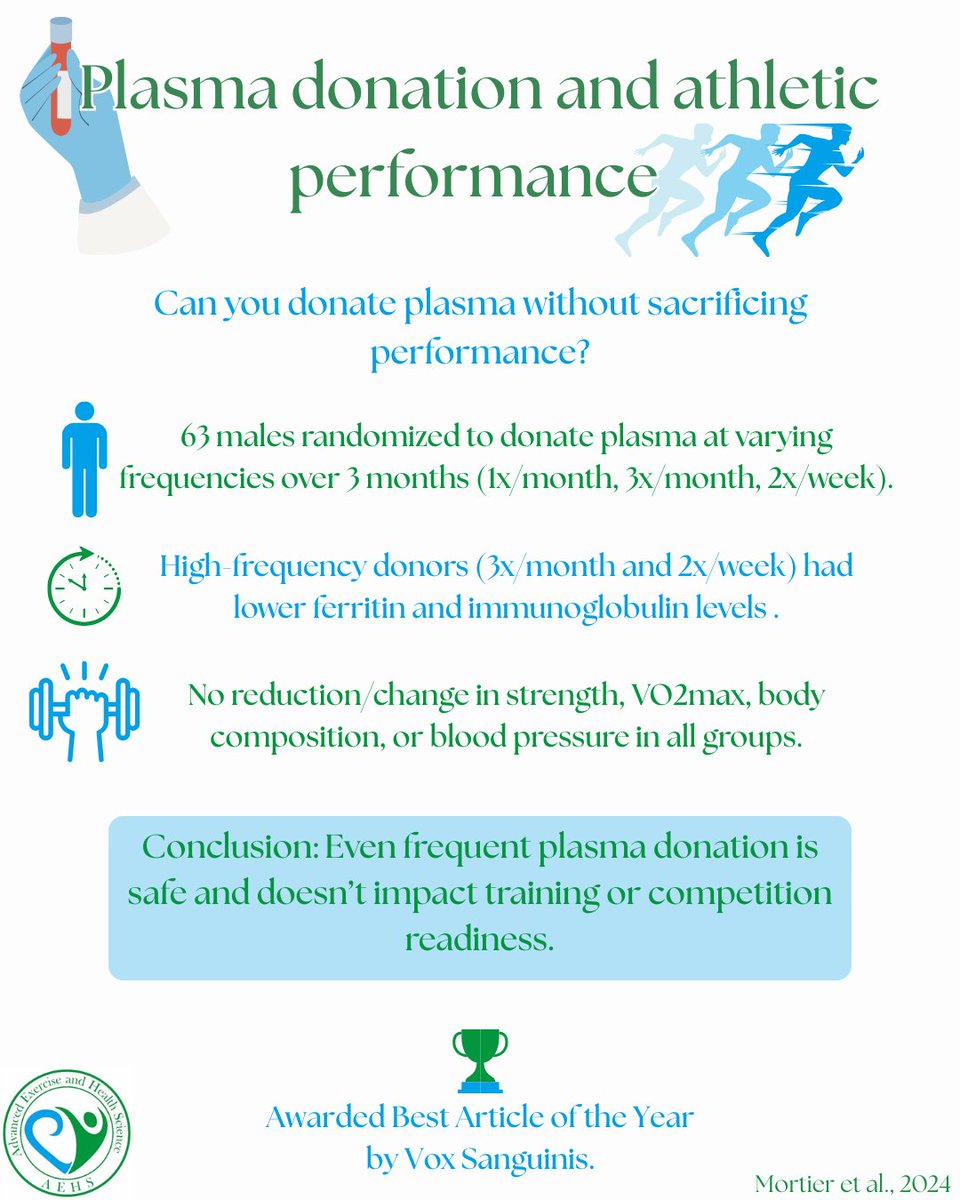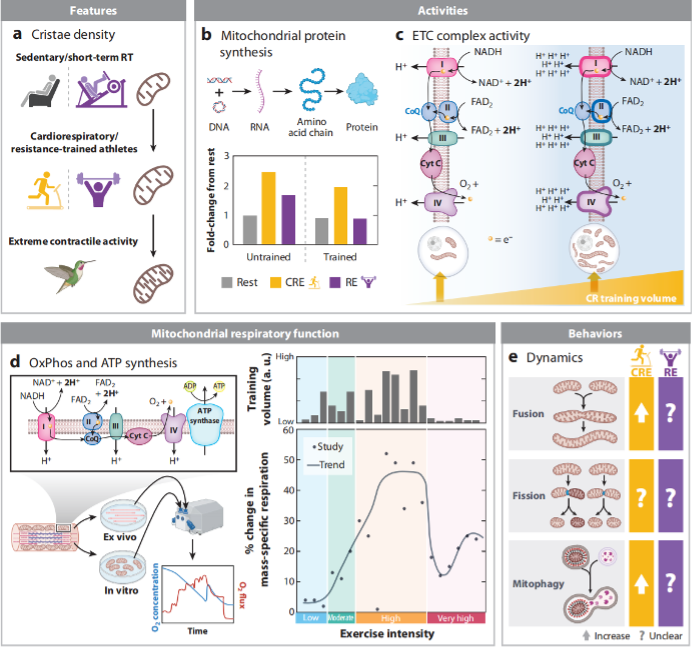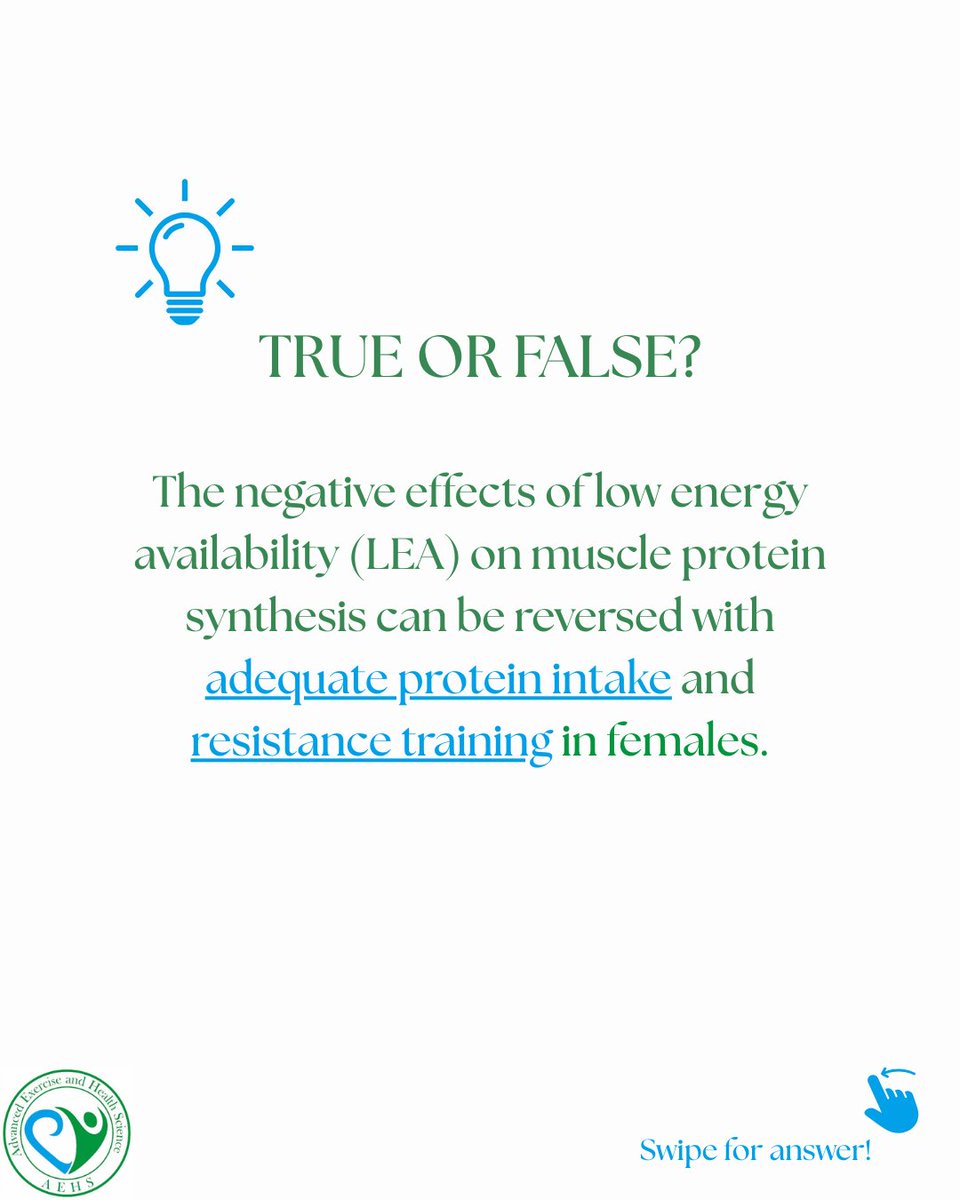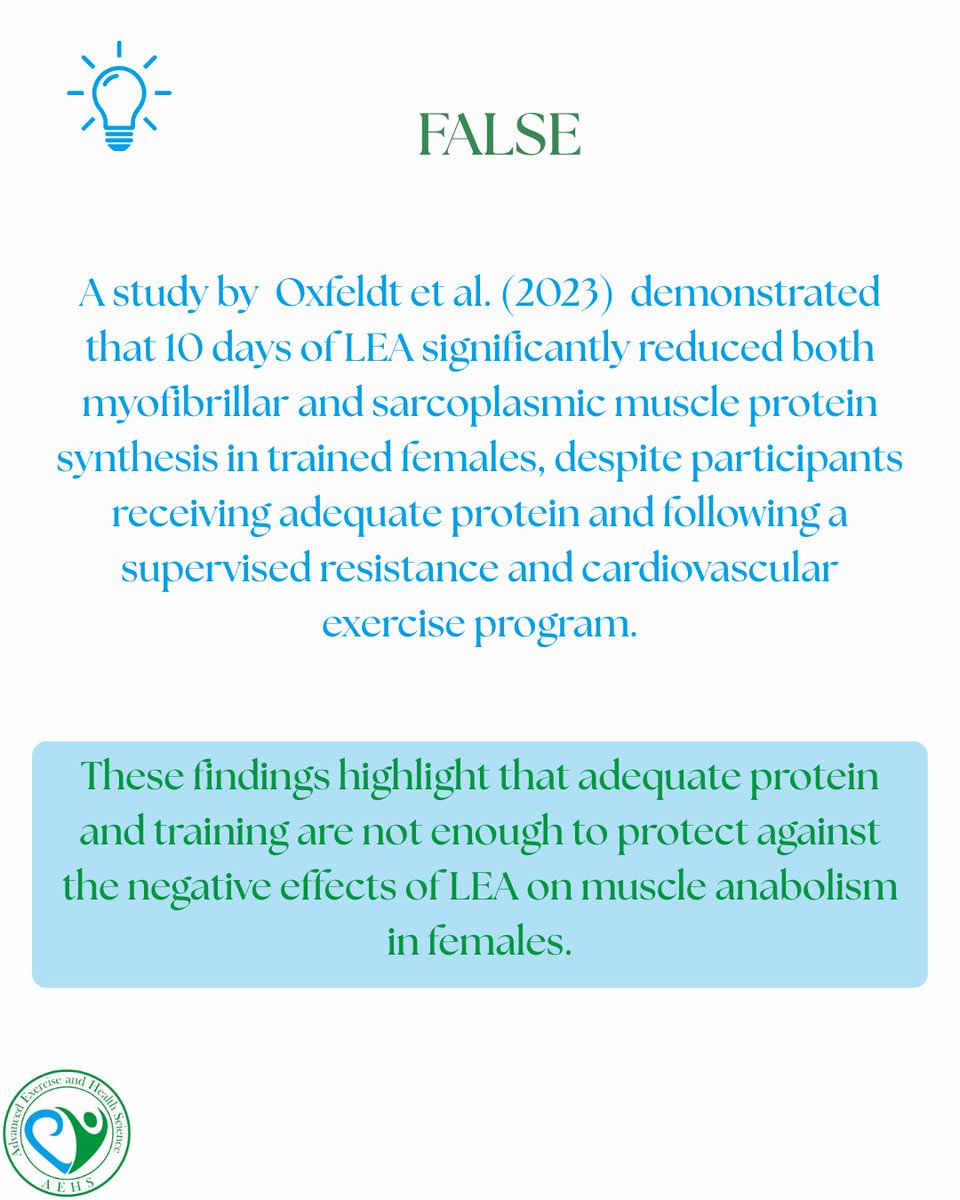Advanced Exercise & Health Science
@AdvExHlthSci
AEHS is an open access international peer-reviewed quarterly publication encompassing a broad range of themes within exercise and health science.
🩸Encouraging plasma donation is a public health priority but outdated fears about performance loss keeps the active population away. An RCT by Mortier et al. shows even frequent donation doesn't impair performance. 📄PMID: 37997609. #PublicHealth #PlasmaDonation

New @AnnuRevPhysiol review: Exercise alters skeletal muscle mitochondria. 🔹 Volume ↑ with training (needs intensity) 🔹 High-intensity > moderate for MitoPS & respiration 🔹 Fusion ↑; mitophagy unclear Training dose/type matters. 🔗 bit.ly/3IFJjZS

🫁 New research: Just 10 weeks of training can boost lung function in kids with cystic fibrosis. ✅ Endurance ✅ Resistance ✅ Best of all? Concurrent training 💪 Improved pulmonary function & quality of life. Exercise is medicine. #CysticFibrosis #PedsCare #ClinicalTrials

Is resistance training + protein enough to protect muscle during low energy availability? Take our quick knowledge check and then dive into the full article! #AEHS #SportsScience #MuscleHealth #ProteinMetabolism #FemaleResearch #FemaleAthlete




🚨 Volume 2, Issue 2 is now live! The latest issue of AEHS is now available online—featuring fresh research, expert perspectives, and cutting-edge discoveries in exercise and health science. 🌟 🖱️ Access the full issue now: bit.ly/4eD0iI7 #AEHS

🧬Can exercise-derived EVs fight inflammation at the cellular level? Prof. Louise Deldicque’s team at UCLouvain tests plasma EVs from post-exercise blood on inflamed fat cells to uncover their anti-inflammatory potential. #ISEV #ExtracellularVesicle #ExerciseBiology #Inflammation

📣 AEHS Forum 19 📚 Topic: School-based physical activity & its impact on cognition, learning, and health 🎙 Simon Cooper | 🎤 Bjorn Tam 🗓 July 4 | 19:30 Beijing | 7:30 AM EST 🔗 Zoom: 921 1217 0102 | PW: AEHS 📺 Livestream via QR on poster #AEHS #ExerciseScience #Webinar

10 days of low energy availability (LEA) in trained females reduces muscle protein synthesis, even with training & high protein intake. ⚠️LEA also reduced lean mass & metabolic rate. 🧠Fuel matters. 🔗 bit.ly/3GjkMbZ #FemaleAthletes @OxfeldtMikkel

Meet Dr. Gianni Parise, AEHS Deputy Editor-in-Chief, and longtime mentor to curious scientists. 💡 Read his full Q&A → bit.ly/4lGgOJR #AEHS #FacultyFeature #ExerciseScience #MuscleResearch #AcademicMentorship #GradSchoolLife


Myokine CLCF1 may attenuate age-related muscle and bone decline. 🔁Nature Comms study shows: ➤CLCF1 ↑ with resistance exercise, ↓ with age. ➤Boosting CLCF1 in old mice: ✅↑Muscle strength & glucose uptake ✅↑Bone density (↓bone loss) bit.ly/3T1wcnD

ICYMI on Instagram (@aehsjournal): AEHS Quiz Game! What is the most common creatine loading protocol? Comment below what you think the answer is! Link to article here: bit.ly/45UePN8


📣 AEHS Forum 18 🤰 Topic: Exercise as a Prescription During Pregnancy 🎙 Linda May | 🎤 Xiaoyu Tian 🗓 June 19 | 19:30 Beijing | 7:30 AM EST 🔗 Zoom: 936 0219 9523 | PW: AEHS 📺 Livestream via QR #AEHS #ExerciseScience #WomensHealth #PrenatalCare

Often labeled a backup fuel, ketone bodies are actually metabolic multitaskers; regulating inflammation, gene expression & epigenetics. 🧬 A new AEHS study explores their role in exercise and recovery. 🔗bit.ly/3FwKBFp #AEHS #Ketones #ExerciseScience #MetabolicHealth




Excessive exercise triggers PARP1 activation in skeletal muscle, leading to energy loss, cellular stress & performance decline. 🧬 New study shows PARP1 inhibition may help protect against overtraining effects. 📖 Read here: bit.ly/3ZNvkXl #exercisescience #PARP1 #muscle
